Charançons dans la Farine - Apprenez les Moyens Efficaces pour Se Débarrasser des Charançons
Les charançons des céréales sont des nuisibles remarquablement gênants. Il est intéressant de noter qu'ils n'apparaissent pas seulement dans les cuisines et les garde-manger, mais pratiquement partout où les céréales et les produits céréaliers sont stockés. Il est courant de les voir dans les magasins, les boulangeries et les ménages où les marchandises sont stockées de manière inadéquate. Sont-ils aussi votre problème ? Découvrez ce que les charançons du blé n'aiment pas et apprenez comment vous en débarrasser rapidement.
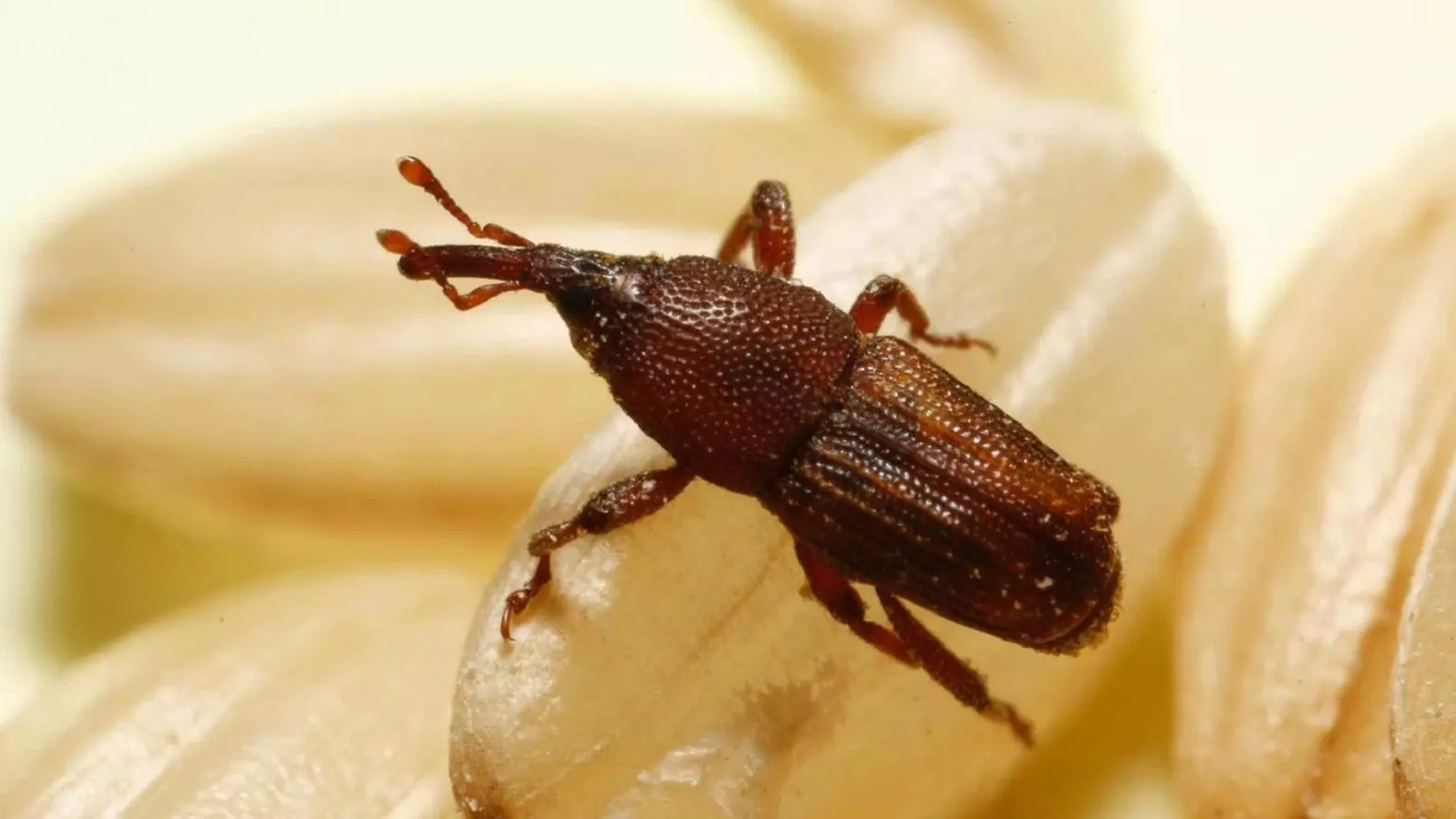
Le charançon du blé - de quel type de ravageur s’agit-il ?
Le charançon du blé, plus précisément Sitophilus granarius est l’un des nombreux ravageurs qui s’attaquent aux marchandises stockées, notamment aux céréales. C’est un petit coléoptère qui préfère un mode de vie nocturne. Il se nourrit principalement de céréales, et c’est pour cette raison qu’il est particulièrement dangereux pour les cultures agricoles. Sans un contrôle approprié de leur système de stockage, les nuisibles peuvent se multiplier à un rythme rapide.
Il est intéressant de noter que les charançons ne vivent pas seulement dans les grands entrepôts. Cet encombrant coléoptère apparaît fréquemment dans de nombreux foyers.

A quoi ressemble le charançon du blé ?
Le charançon du blé est un petit coléoptère qui peut mesurer jusqu’à 5 mm (environ 0,2 in) de long. La forme de son corps peut varier en fonction du grain dans lequel la larve éclot. En général, les coléoptères ont un corps assez mince.
Malgré sa forme caractéristique, le charançon des céréales n’a pas d’ailes comme par exemple les mites à pantalon. La tête du ravageur est relativement petite par rapport au reste du corps, et elle est terminée par une partie buccale allongée. Le coléoptère possède trois paires de pattes robustes.
L’insecte préfère un mode de vie nocturne. C’est à ce moment-là que vous avez le plus de chances de le rencontrer, car c’est là qu’il cherche sa nourriture.
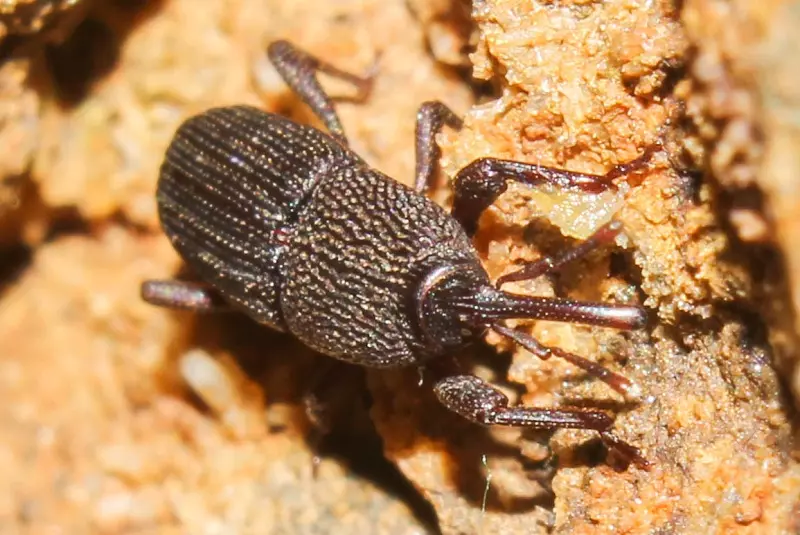
D’où viennent les charançons ?
Le charançon du blé est une punaise des champs qui se multiplie rapidement. Les coléoptères femelles pondent leurs œufs directement dans les grains. Elles utilisent leur bouche pour y creuser des trous, qu’elles referment avec leur salive. En général, un charançon femelle pond un seul œuf dans un seul grain. Le maïs est la seule exception, où elle peut pondre plus d’un œuf.
Une seule femelle charançon peut pondre jusqu’à 150 œufs, mais ce n’est pas une règle. La fréquence de ponte est différente, puisqu’elle peut pondre de un à neuf œufs par jour. Tout dépend des conditions de vie de l’insecte.
Pourquoi faut-il s’inquiéter du charançon des grains ? Les larves éclosent après une dizaine de jours et commencent à se nourrir. Au début, le ravageur est difficile à repérer, car les larves mangent l’intérieur des grains dans lesquels elles ont éclos. Le charançon des grains se transforme en insecte adulte à l’intérieur du grain.
Où le charançon des grains peut-il apparaître dans votre maison ?
Le charançon ne se nourrit pas seulement dans les entrepôts de céréales - le charançon du blé est un invité indésirable dans de nombreux foyers. Il s’attaque généralement aux endroits où sont stockés le riz, le maïs et d’autres produits céréaliers.
Le ravageur peut attaquer:
- amandes,
- noix,
- avoine,
- pâtes alimentaires.
Les charançons du blé se multiplient rapidement en cas d’humidité élevée et à une température ambiante adéquate.
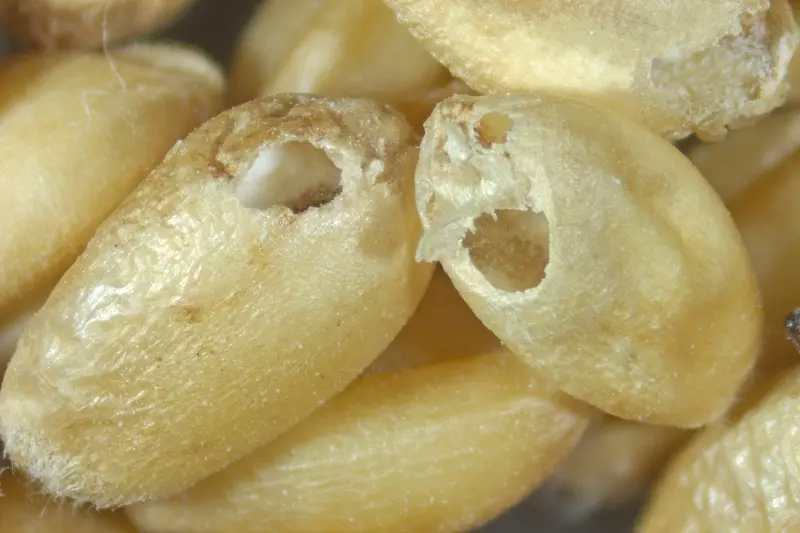
Le charançon du blé est-il dangereux ?
Le charançon du blé apparaît généralement dans les endroits où les céréales sont stockées. Mais que se passe-t-il s’il décide de faire de votre garde-manger son lieu de nidification ? Le charançon du blé représente-t-il un danger pour l’homme ? La destruction des cultures est la menace la plus importante - et si rien n’est fait, il pourrait causer de gros dégâts.
Mais le charançon du blé dans la maison est également un danger. En tant que coléoptère simple, il n’est pas dangereux - il ne porte pas de poison et ne mord pas. Il ne se nourrit pas de sang humain, mais préfère les céréales et les produits à base de farine. Pour cette raison, la présence de cet insecte ne doit jamais être ignorée, qu’il se trouve dans un silo ou dans une maison.
Comment se débarrasser des charançons dans la farine et les céréales ?
Le charançon du blé est un ravageur typique des entrepôts. Mais si vous le remarquez dans votre maison, ne l’ignorez pas. Veillez à prendre les mesures nécessaires pour vous débarrasser de l’insecte aussi vite que possible.
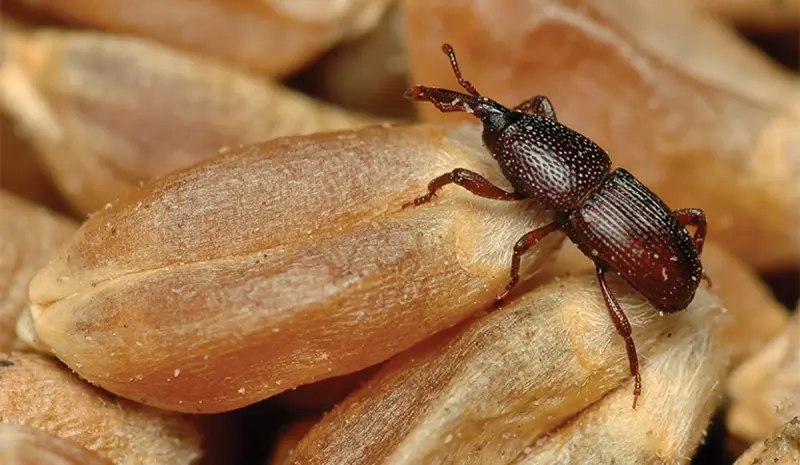
Sécuriser la nourriture correctement
Bien conserver les aliments est l’habitude la plus importante à prendre dans votre foyer. Ouvrez tout produit à base de céréales fraîchement acheté et mettez son contenu dans un récipient hermétique. Stockez ces produits dans un endroit frais et sec, contrairement à ce que préfèrent les charançons du blé.
Les charançons du blé et le bruit
Le charançon du blé est un insecte qui n’aime pas le bruit. Vérifiez régulièrement le contenu de votre garde-manger et déplacez les récipients. Cela fera sortir les charançons de leur cachette, et vous pourrez peut-être vous en débarrasser avant qu’ils ne se reproduisent en plus grand nombre.
Le charançon des céréales et les basses températures
Les coléoptères ne supportent pas les basses températures. Si vous voulez tuer le charançon du blé, réfrigérez les récipients dans lesquels vous avez remarqué l’insecte. Conservez-les au réfrigérateur pendant au moins un mois. Vous pouvez rendre le processus beaucoup plus rapide en plaçant les récipients dans un congélateur pendant 24 heures.
Pièges à charançon du blé
Les pièges à colle sont une méthode efficace pour se débarrasser des charançons des céréales. La colle rend le ravageur immobile, grâce à quoi vous pouvez facilement vous en débarrasser. Vous pouvez choisir parmi différents types de pièges, par exemple avec une phéromone ou un appât alimentaire.
Quelle température tue le charançon du blé ?
Le charançon du blé ne tolère ni les basses ni les hautes températures. Une température de -15°C (5°F) affectant le coléoptère pendant au moins 24 heures est un moyen idéal pour tuer les insectes adultes, les larves et les œufs. 60°C (140°F) est un autre seuil. Le charançon des grains ne peut pas survivre à une telle température. Ces deux extrêmes sont des moyens efficaces de se débarrasser du ravageur.
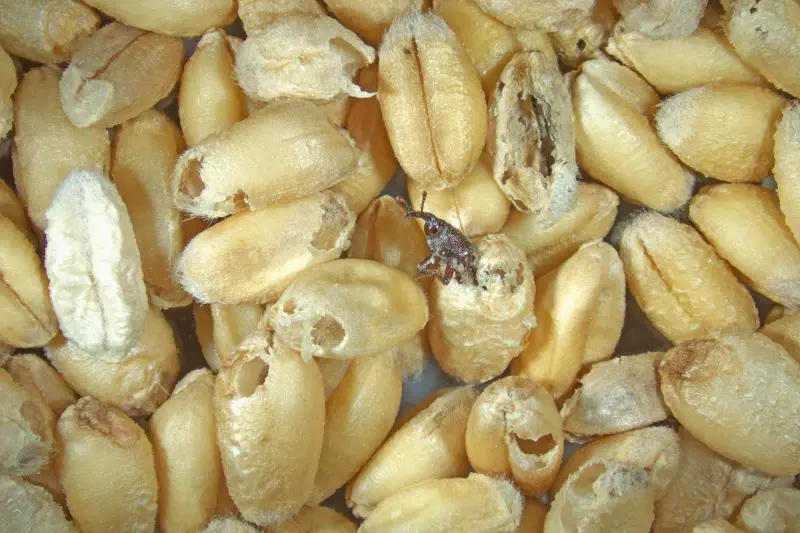
📍 Qu'est-ce que le charançon du blé ?
Le charançon des céréales est un type de coléoptère. Il est considéré comme l'un des insectes les plus importants susceptibles d'apparaître dans les entrepôts de stockage de denrées alimentaires. À quoi ressemble le charançon du blé ? Ce coléoptère a un corps allongé de 3 à 5 mm de long.
📍 Que font les charançons du blé ?
Les charançons du blé sont généralement rencontrés dans les entrepôts et les silos. Ils s'attaquent aux céréales stockées et aux autres produits riches en amidon.
📍 Le charançon du blé - d'où vient-il ?
La femelle du charançon du blé pond généralement un œuf par grain. Elle le mord, pond un œuf et cimente le trou à l'aide de sa salive. Les graines de maïs sont la seule exception, car l'insecte peut pondre plusieurs œufs dans un seul grain, dans ce cas. Les parasites peuvent être ramenés à la maison avec des aliments achetés - c'est un moyen simple d'obtenir une infestation.
📍 Comment se débarrasser des charançons du blé ?
Le charançon du blé est un insecte qui n'aime pas le bruit, il n'occupera donc pas les zones bruyantes. Au lieu de cela, ils se cachent dans les coins. La congélation est un moyen efficace de se débarrasser des charançons du blé. Une température inférieure à -15°C (5°F) pendant au moins 24 heures tue efficacement les nuisibles.
Articles de fond




